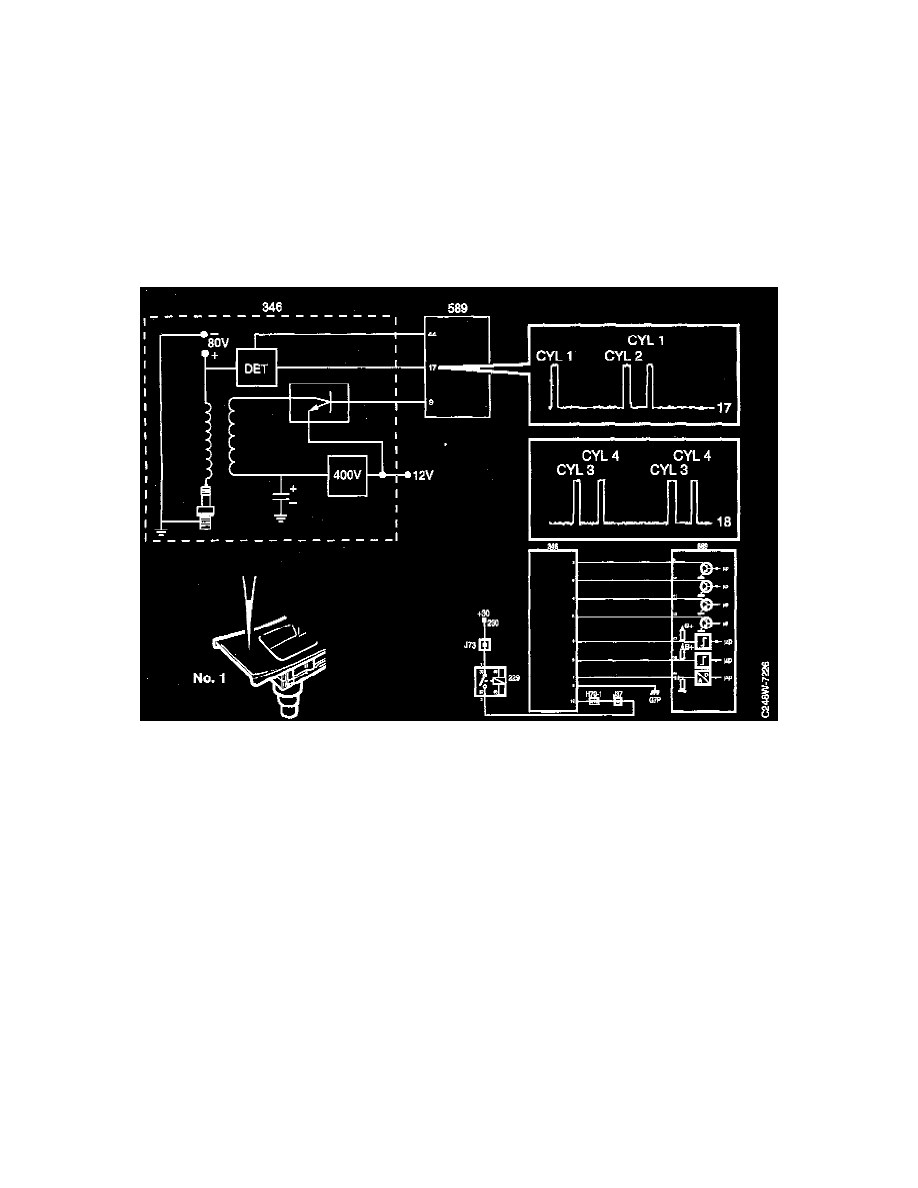9000 Aero L4-2290cc 2.3L DOHC Turbo EFI HO (1997)

Combustion Signals
The Trionic system does not have a camshaft position sensor. A camshaft position sensor is normally required for sequential knock control and fuel
injection.
The Saab Trionic must decide whether cyl. 1 or cyl. 4 is firing when the crankshaft position sensor indicates that cyl. 1 and cyl. 4 are at top dead centre.
This is done as follows:
One of the poles of the secondary windings of the 4 ignition coils is connected in the usual manner to the spark plugs. The other pole is not connected
directly to ground but to 80 V. As a result, 80 V is always present across the spark plug electrodes except at the very moment a spark is produced.
When combustion takes place, the temperature in the combustion chamber is very high. The gases are ionized and start to conduct current. This means
that a current passes across the spark plug gap (without producing a spark).
The ionization current is measured in pairs, cylinders 1+2 and cylinders 3+4. If combustion takes place in cylinder 1 or 2, the ignition discharge module
sends a pulse (B+) to pin 17 of the Trionic's engine control module. Similarly, the ignition discharge module sends a pulse (B+) to pin 18 of the engine
control module if combustion takes place in cylinder 3 or 4.
If the crankshaft position sensor indicates that cylinders 1 and 4 are at top dead centre and a pulse (B+) is applied to pin 17 of the engine control module
at the same time, then the engine control module knows that cylinder 1 has fired.
When the engine is started, the ECM does not know which of cylinders 1 and 4 is in the compression position, and ignition consequently takes place on
both cylinders 1 and 4 simultaneously. In the same way ignition takes place on cylinders 2 and 3. As soon as combustion signals arrive on pins 17 and 18
of the ECM, both ignition and fuel injection are synchronized to the engine firing order.
On M96 and later models (On-Board Diagnostic II), combustion signals are also used to detect misfiring.
In the event of an open circuit in either of the leads connected to pins 17 and 18 of the electronic control module, no synchronization of ignition timing
or fuel injection will occur. Knock control will take place at the same time on cylinders 1+4 and 2+3.
